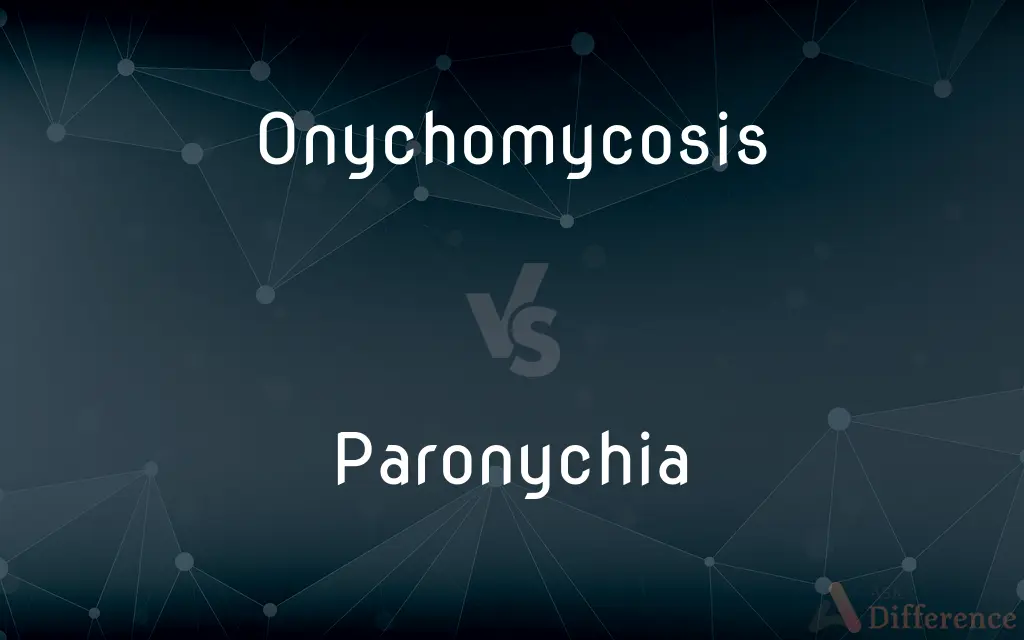Onychomycosis vs. Paronychia — What's the Difference?

Difference Between Onychomycosis and Paronychia
ADVERTISEMENT
Compare with Definitions
Onychomycosis
Onychomycosis, also known as tinea unguium, is a fungal infection of the nail. Symptoms may include white or yellow nail discoloration, thickening of the nail, and separation of the nail from the nail bed.
Paronychia
Paronychia is an inflammation of the skin around the nail, which can occur suddenly, when it is usually due to the bacteria Staph. aureus, or gradually when it is commonly caused by Candida albicans.
Onychomycosis
A fungal infection of the fingernails or toenails that results in thickening, roughness, and splitting of the nails.
Paronychia
Inflammation of the tissue surrounding a fingernail or toenail.
Onychomycosis
Fungal infection of the nail, especially the toenail.
ADVERTISEMENT
Paronychia
(medicine) An infection under the cuticle of a fingernail or toenail.
Paronychia
A whitlow, or felon{3}.
Paronychia
Infection in the tissues adjacent to a nail on a finger or toe
Paronychia
Low-growing annual or perennial herbs or woody plants; whitlowworts
Share Your Discovery

Previous Comparison
Ritenuto vs. Ritardando
Next Comparison
Profitability vs. Liquidity













































